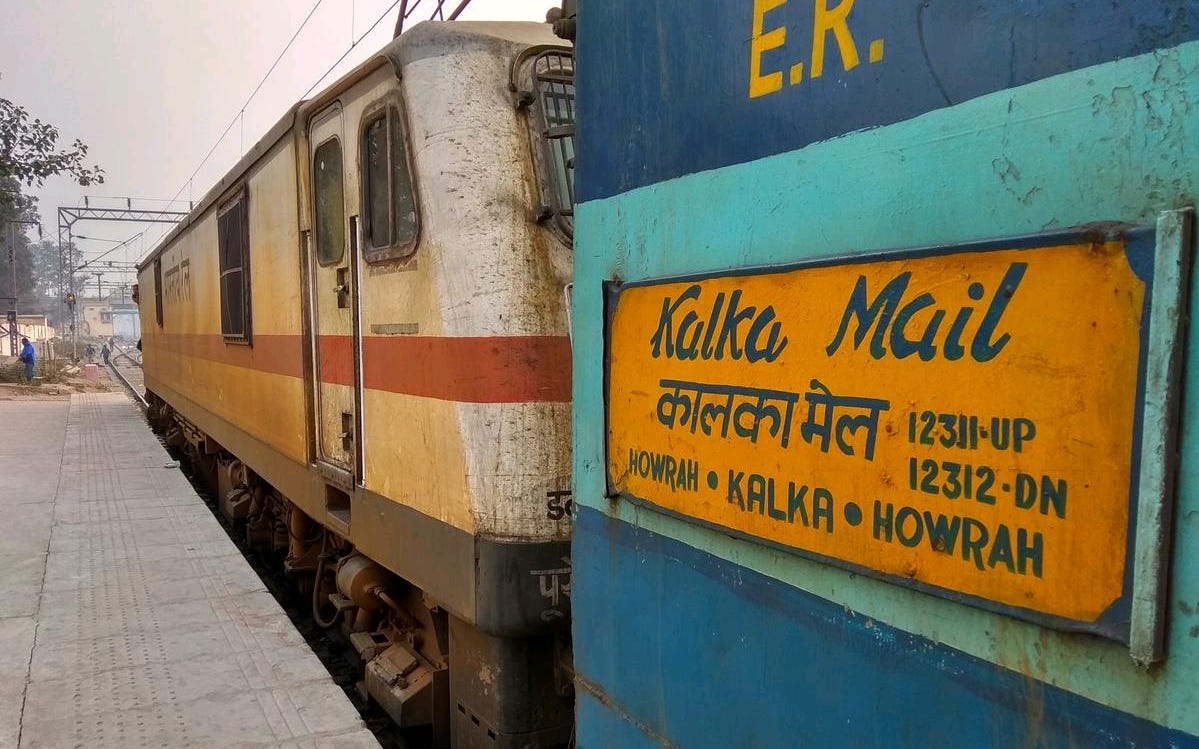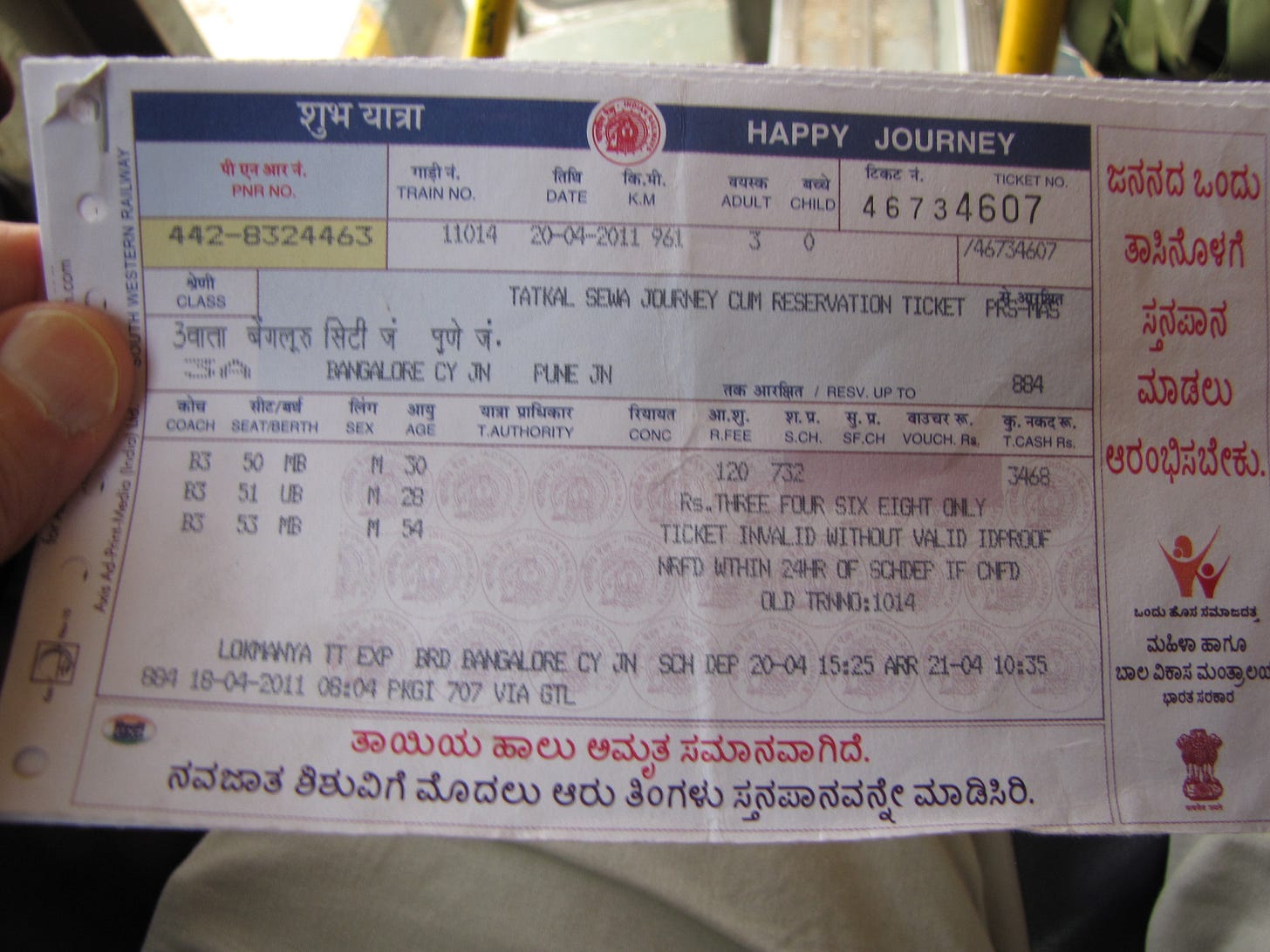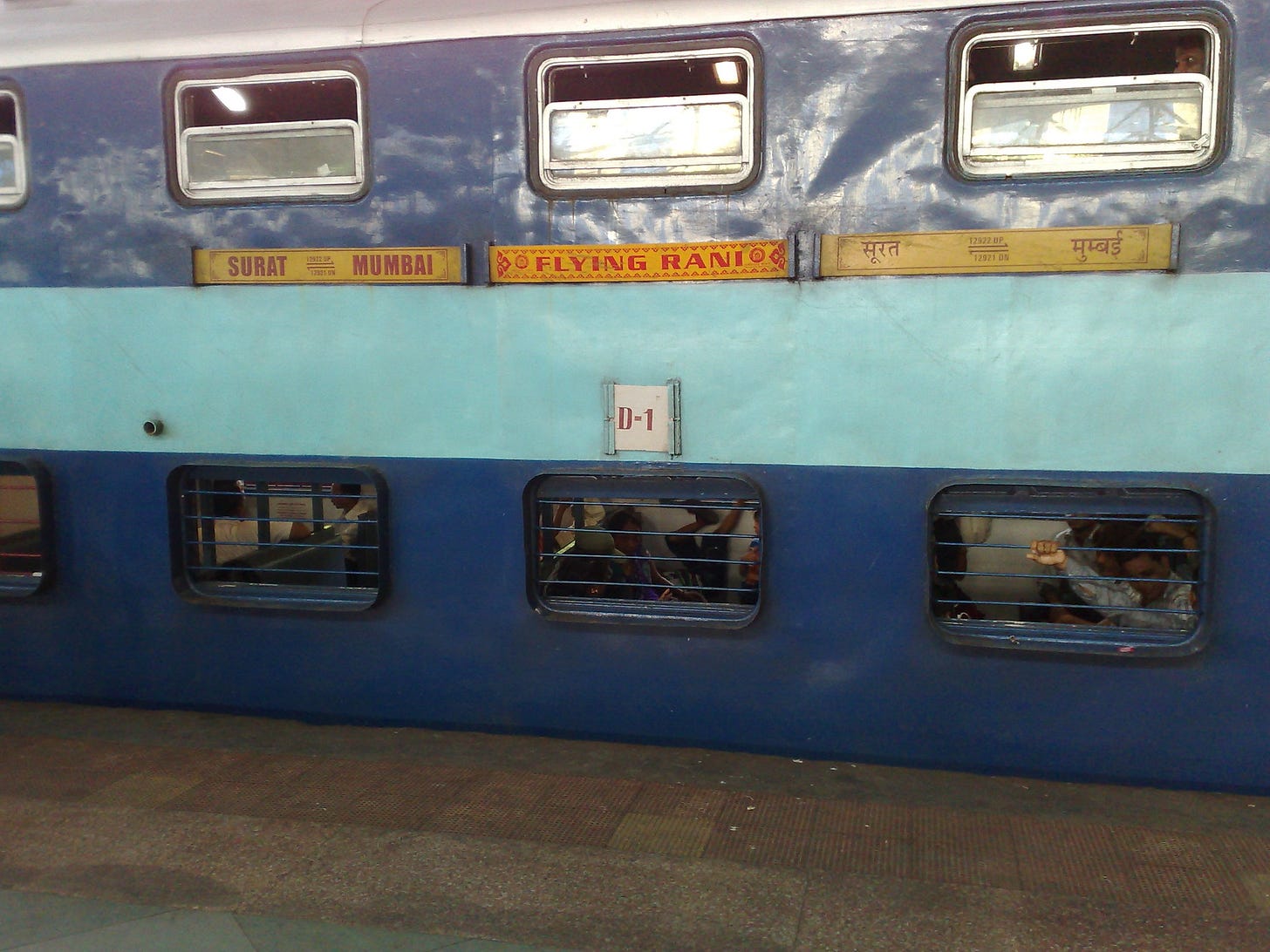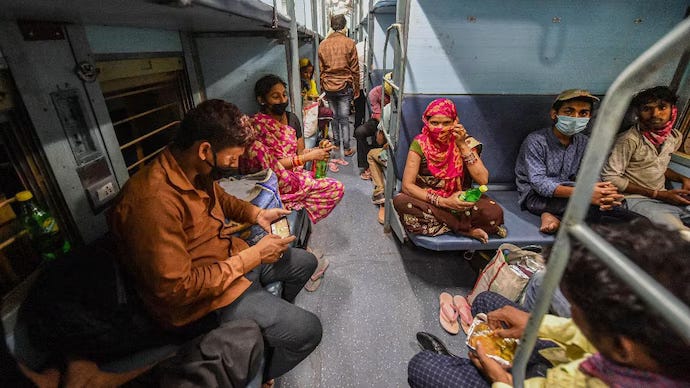Second-Class (AC) Citizen
The Trains of India, Redux
When I first started travelling in Asia, 25 years ago, I fell in love with India’s rail system. Trains became my preferred way of getting around the subcontinent—slower than planes, but, wow, what a way to get to know a country! Here’s a straphanger’s tribute to one of the world’s great rail networks, which has certainly changed since then—though maybe not as much as you might think. (Eight high-speed corridors have been approved, but India still has no Japanese- or Chinese-style bullet train.) If you detect a bit of exoticising Orientalism in the text, I hope you’ll forgive my younger, wider-eyed self.
It took some searching, but I finally found India’s perfect train.
It’s not the locomotive that takes tourists to the hill station of Simla, winding its way through more than a hundred tunnels blasted out of the sandstone of the Himalayas. Nor is it the Palace on Wheels, where, for hundreds of (American) dollars a night, foreign visitors nostalgic for the Raj are whisked across the deserts of Rajasthan and regaled with butter chicken by liveried staff in turbans.
And no, it’s definitely not a workhorse like the Howrah-Kalka Mail Train, where you have to chain your bags to your wrists to prevent theft, and tea vendors wake you at 6 in the morning with a rousing yell of ''chaaai!'' The train I'm talking about is impeccably clean; there are no unexplained stops, and it has an unblemished safety record. In fact, the only drawback I could find in New Delhi's “Joy Train” is the fact that it goes around in little circles, completing its route in under five minutes.
To tell the truth, I didn't want to get off. I was tempted to take this miniature steam engine painted with Donald Ducks and Mickeys -- which spends its predictable days bearing diplomats' children around the grounds of New Delhi's National Rail Museum -- all the way back to the Bombay airport.
I'd finally discovered a place that corresponded to the platonic ideal of the Indian rail network. The museum, in New Delhi's eerily humanity-free Chanak yapuri district, was filled with gaily painted, lovingly restored steam locomotives and staffed by passionate rail enthusiasts. All in all, the Rail Museum and its “Joy Train” were cheerful, orderly and calm. The exact opposite of train travel in the rest of India, in fact, which tends to be nasty, brutal and long. But also, I'll admit, endlessly fascinating.
India’s 39,000-mile rail network is, along with Russia’s and China’s, one of the most extensive in the world. And its 7,000 trains carry 11 million people every day. Rail travel isn't the fastest way to go in India, but it offers more flexibility than flying, because airline seats have to be booked far in advance and, thanks to quota systems, tend to get filled by V.I.P.'s.
My first trip, a 20-hour overnighter from Bombay to Gwalior on the Punjab Mail, seemed to introduce me to a sampling of the archetypes of the subcontinent. A lithe transgender woman in a luminescent sari walked by as I was padlocking my bag to a wire loop beneath the lower berth, crooning a suave ''Good evening.'' Red-jacketed porters brusquely deposited camouflage-colored suitcases in the aisles. As we pulled out of Bombay's Victoria Terminus, a kind of sprawling Gothic Revival castle, a mother stretched her arms through the barred apertures that serve as windows, lingeringly clutching the hands of two adult sons on the platform. A trio of saturnine Sikhs, broader by half than anyone else in the compartment, claimed their berths with territorial insistence. Later, a wild-eyed, snake-thin pilgrim, ecstatic about starting his voyage to a Krishna temple in Uttar Pradesh, sat down next to me and excitedly asked me where I was from. Before I could answer, he pinched the still-pale skin of my forearm, shook his head in wonder, and said, “It can only be somewhere very cold, because you are so very white.”
The sun would darken my complexion over the next few weeks, but I never became fully acclimated to the chaos of the second-class sleeper. My berth, which had no door, felt like a front porch along some parade route, and the procession rarely ebbed. Vendors carried metal buckets full of peanuts, artfully surrounded by chopped onions and limes, thermoses full of sweet and spicy tomato soup and tureens from which an endless stream of sweet tea, clouded with buffalo milk, poured into disposable terra cotta cups.
Sometimes it felt as though an entire village had packed up and decided to move one stop down the line, clambering aboard with cardboard boxes and wide-eyed babies, and then disappearing at the next sta tion without ever having produced a single ticket.
INDIAN RAILWAYS has its own government ministry and a payroll of 1.6 million. Often called the single largest employer in the world, it forms a kind of India within India.
Every station has its resident population of pavement children; when they glimpsed my profile, their upturned palms would extend through the windows, beseeching rupees. When I'd lurch toward the squat toilet in the middle of the night (avoiding the commode-style “Western toilet” for reasons of hygiene) I'd find them sleeping on the shifting plate metal between wagons, tiny heads dreaming over the flickering tracks visible below. A stencilled sign at each end of the compartment claimed that conductors were responsible for keeping “urchins and unlicensed vendors out of the train,” but the job seemed beyond them.
Though the trips were long, I was never truly bored. I could always peruse the 160-page, soft-cover Trains at a Glance, the Indian Railways timetable, for sale in station kiosks, constructing fantasy itineraries through the network’s 7,000 or so stations. The Kanniyakumari Express, for example, sounded like a displaced Japanese bullet train. During my voyages I could see myself alighting in the kittenish Jhajha, the mysterious Motihari, or the jocular Harihar; and I was definitely tempted by Karnal. I imagined that New Cooch Behar, which conjured images of a novelty dance step at the Cab Calloway-era Cotton Club, was a swinging kind of place. On those days when I felt overwhelmed by the subcontinent, I swore I'd never succumb to the lunacy of Manmad, or aggravate matters further by getting off in Mania, and I feared that if I detrained at Miraj, it would disappear.
Sleepless in the upper berth, with only the metal blades of the ceiling fans and the fluorescent lights for company, I passed the time trying not to think about rail disasters. A report published a few years ago in India Today magazine estimated that 50 people in India are killed by trains every day. Many of them are groggy trespassers, who have wandered onto Indian Railways property to avail themselves of the nation's most extensive open-air outhouse. Nonetheless, rail crashes are frequent and spectacular in a country where in- and out-bound trains often share single tracks. In a bad year, about 500 passengers die; but since the network carries some 4 billion people, I calculated that my odds were about 1 in 8 million. Unfortunately, the insomniac brain, surrounded by hard-edged metal partitions and protruding feet, rejects such easy consolation.
Well, if I went, I wouldn't be alone. As the only light-skinned foreigner in my rail car, I answered a lot of questions, and made many friends. By the time I'd arrived at the Rail Museum in Delhi, my wallet, bulging with business cards, was a testimony to the endless curiosity and gregariousness of my fellow passengers. I’m particularly indebted to Mr. Shukla, on the No. 2138 to Jhansi, for his advice on outwitting the touts in auto-rickshaws outside the train station. Thanks, Ashish (No. 2956 to Bombay), I enjoyed the pappadums; they really hit the spot.
After 2,640 miles and 79 hours as a citizen of second-class, I have to admit I'm a bit confused about which vision of Indian Railways to take home with me. Is it the idealized version of steam locomotives bravely chugging up to the tea plantations of Darjeeling, and narrow-gauge maharajahs' cars making their stately way among the peacocks of Rajasthan, as presented in official tourist brochures? Or is it the real-life network of workaday diesel engines that typically pull 20 rail cars crammed with up to 1,100 passengers in non-air-conditioned chaos? The former is what you'll find in the Rail Museum, where the “Joy Train” makes it eternal rounds. I'm pretty sure that the workaday train, filled as it is with curious pilgrims, flirtatious Hijra and heart-wrenching urchins -- not to mention the odd sweating tourist -- is the image that will stick with me for the rest of my life.








